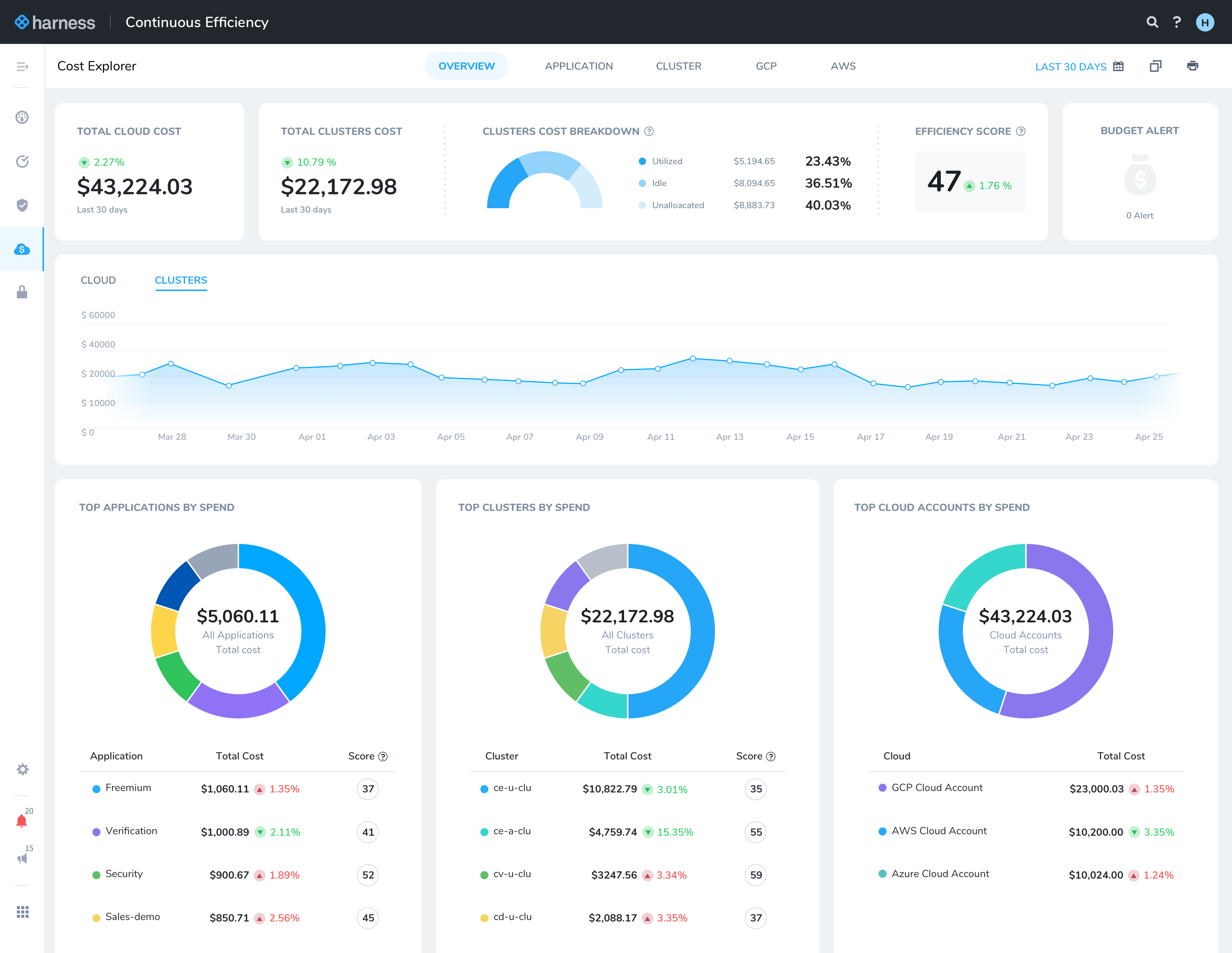Harness today unfurled its Continuous Efficiency application, which enables DevOps teams employing its continuous delivery platform delivered as a service to monitor the cost of deploying applications on a public cloud.
Company CEO Jyoti Bansal said cloud costs are spiraling out of control within many IT organizations because DevOps teams lack visibility into the true cost of deploying an application on not just one cloud versus another but also specific tiers of services made available by cloud service providers.
Continuous Efficiency provides DevOps teams with granular cost breakdowns by cloud provider, cloud service, application, microservice and environment, as well as by Kubernetes cluster, namespace, workload, node and pod.
Bansal said that capability is crucial for organizations looking to identify underutilized resources that they today typically only become aware of when a monthly bill is presented by the cloud service provider. Even then, it’s too late for the DevOps teams to proactively optimize the cloud environment to minimize costs.
In fact, it’s currently too difficult to correlate the monthly bill presented by a cloud service provider with specific application services that might have been consuming that infrastructure, he noted, adding Continuous Efficiency is specifically designed for DevOps teams rather than the finance team.

In the wake of the economic downturn brought on by the COVID-19 pandemic, DevOps teams are under more pressure than ever to reduce cloud costs, said Bansal. Not only has the cloud become the single largest expense for DevOps teams, but also IT leaders are being required to better predict costs at a time when organizations are unsure how much revenue they are able to generate from one month to next. The days when DevOps teams could view the cloud as essentially a free resource are now over, he noted.
Beta customers who tested Continuous Efficiency have been able to realize as much as $500,000 in annualized savings on their cloud costs, Bansal added.
Harness is leveraging its continuous delivery service to auto-discover cloud costs without requiring IT teams to manually tag cloud resources. As a CD platform accessed as a service, Harness is able to aggregate all that data in real-time on behalf of its customers. The Harness platform supports Amazon Web Service (AWS), Microsoft Azure and Google Cloud Platform, including the Kubernetes based services provided by those services.
Much like the rest of the IT environment, Bansal said responsibility for managing cloud costs will increasingly shift left toward DevOps teams. As one of the primary consumers of those services, it’s typically DevOps teams who have the most variable consumption of cloud services. All too often, it turns out that costs are being incurred because developers have reserved instances of virtual machines on a public cloud for sake of convenience but are not actually using. When many organizations are deeply concerned about cash flow, tolerance for that behavior is quickly dropping to near zero.
Rightsizing of cloud computing environments has, of course, been inevitable. The thing that has changed is the current economic climate has transformed rightsizing from being merely the desired goal into an absolute requirement.



